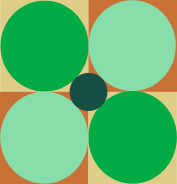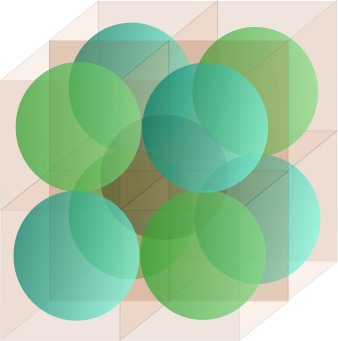Unintuitive
Consider a square partitioned into 4 smaller squares of equal size, and in each square, draw a circle that touches its sides. Now draw a circle at the center that touches all 4 circles:

We could take this up into the 3 dimension. Take a cube, partition it into 8 smaller cubes of equal size, and in each cube, inscribe a sphere that touches the smaller cube's sides. Now draw a sphere at the center that touches all 8 spheres.

Now let's generalize it to -dimensions. We take an -cube dimensional hypercube , partition it into smaller -cubes of equal size, and in each smaller -cube, inscribe an -sphere dimensional hypersphere that touches all the smaller -cube's sides. Now generate another -sphere at the center such that it touches all -spheres.
Here's the question: What is the lowest dimension where the center -sphere (that touches the other spheres) intersects the sides of the larger -cube as well? (The "larger -cube" refers to the -cube made up of the smaller cubes.)
If you think that this never happens, enter the answer of 0.
The answer is 9.
This section requires Javascript.
You are seeing this because something didn't load right. We suggest you, (a) try
refreshing the page, (b) enabling javascript if it is disabled on your browser and,
finally, (c)
loading the
non-javascript version of this page
. We're sorry about the hassle.
Consider the original cube [ − 2 , 2 ] N (of side length 4 ) subdivided into 2 N sub-cubes (each of side 2 ). These sub-cubes are inscribed by the spheres S ϵ , for ϵ ∈ { − 1 , 1 } N , where S ϵ = { x ∈ R N ∣ ∣ ∥ x − ϵ ∥ 2 ≤ 1 } Each of these spheres are of radius 1 . Diametrically opposite spheres are S ϵ and S − ϵ , and the centres of these spheres are a distance ∥ ϵ − ( − ϵ ) ∥ = 2 ∥ ϵ ∥ = 2 N apart, and hence the centre sphere has diameter 2 N − 2 , and so has radius N − 1 . Thus we want to know the value of N for which N − 1 = 2 , namely N = 9 .